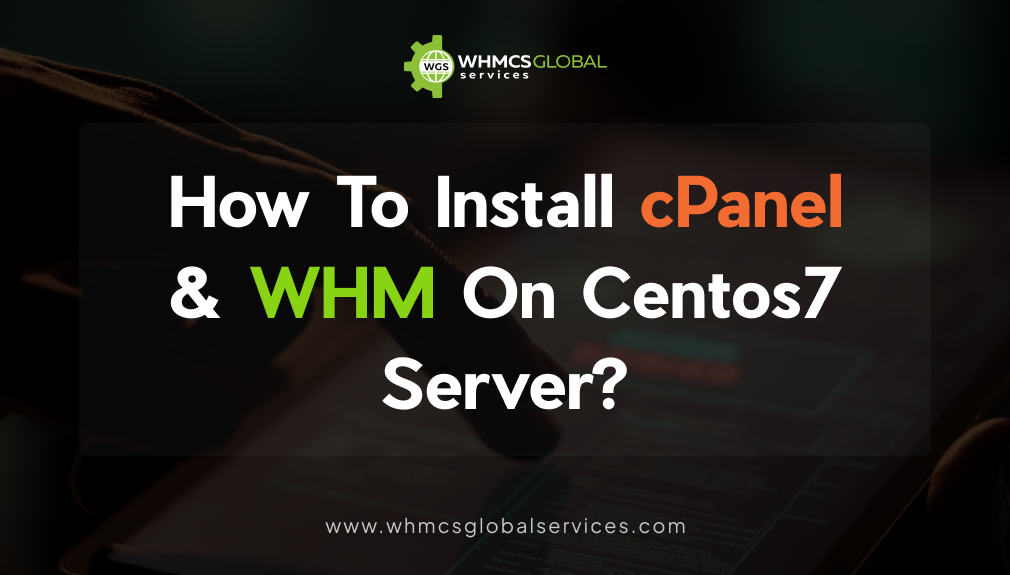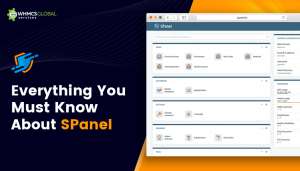
Efficiently managing a server can be tedious, but with appropriate tools, it becomes easier and smoother. If you seek a comprehensive and user-friendly solution, cPanel and WHM (Web Host Manager) are widely acclaimed options. By offering a graphical interface and a suite of robust features, cPanel and WHM empower server administrators to handle various aspects of server management effortlessly. In this article, we will guide you through installing cPanel or WHM on a CentOS 7 server, allowing you to streamline your server administration and unlock a world of possibilities. Let’s get started.
What is cPanel & WHM?
cPanel & WHM serves as a robust server management solution, catering to the diverse needs of IT professionals, developers, business leaders, partners, and small and midsize businesses. This comprehensive solution empowers teams to create and manage websites, domains, and cPanel accounts effortlessly, unleashing their creativity and productivity.
With cPanel & WHM, professionals can leverage an array of powerful tools such as phpMyAdmin and MySQL Wizard, enabling seamless design and deployment of custom databases. Administrators gain granular control over their servers by effortlessly allowing or blocking specific IP addresses, proactively monitoring servers to identify potential issues, and encrypting outbound messages for enhanced security.
The Webhost Manager interface provides administrators with a centralized platform to efficiently manage reseller accounts, create tailored hosting plans, seamlessly restore data from archives, monitor server processes, and monitor disk usage. Furthermore, cPanel & WHM facilitates the establishment of robust email networks, enables efficient management of intranets through domain name spaces (DNS), and simplifies the creation of file backups, ensuring data integrity and reliability.
Recognizing the importance of security, cPanel & WHM offers features such as the streamlined deployment of SSL certificates across web servers, bolstering the protection of sensitive information. Additionally, the solution enhances authentication by providing multi-factor authentication services to customers, further safeguarding valuable resources.
Businesses can easily add or remove subdomains, create custom name servers, and terminate user accounts, allowing for streamlined management and scalability. By leveraging the power of cPanel & WHM, organizations can optimize their server management workflows, reduce complexities, and focus on driving their target business goals.
Explore: Top 5 WHMCS Companies
Why cPanel is required?
We need cPanel simply due to the fact that it is the best web-based control panel in the market. No other web hosting management software can match its features and functionality. It is much safer and easy to use.
In this article, we will focus on how to install cPanel and WHM on CentOS 7 and let us have a glance at the installation requirements.
Please note: Once you have installed cPanel/WHM, you cannot remove it from your system. For this, you need to reinstall your operating system to remove it. cPanel is commercial software and, of course, needs a license to work. However, you can get it at a 15-day trial and purchase the software later.
Difference Between cPanel and WHM
Features |
cPanel |
WHM |
| Reseller Hosting | Not designed for reseller hosting. | Enables reseller hosting by allowing creation and management of reseller accounts. |
| Account Management | Manages individual cPanel accounts. | Creates and manages cPanel accounts, assigns resources, and sets up hosting packages. |
| Server Configuration | Configuration Limited access to server-level settings. | Full control over server-level settings and configurations. |
| Domains | Adding and removing add-on domains and subdomains is possible. | One can only add domains and not subdomains. |
| Security Features | Offers account-level security features like SSL certificates and IP blocking. | Provides server-level security measures, firewall configuration, and access control. |
Related Reads: What Is The Difference Between WHM Autopilot vs WHMCS?
Features of cPanel & WHM
- cPanel provide a user-friendly graphical interface, allowing users to easily navigate and manage their hosting accounts without requiring extensive technical knowledge.
- WHM offers comprehensive server monitoring capabilities, allowing administrators to track server performance, monitor resource usage, and identify potential issues or bottlenecks. It provides real-time statistics and alerts to ensure optimal server performance.
- cPanel provides various security measures, including SSL certificate management, IP address blocking, and directory password protection. Users can also configure firewall settings and access security features like Hotlink Protection and ModSecurity.
- Users can manage domain names and configure DNS settings directly from the cPanel interface. They can create custom DNS records, set up subdomains, and manage domain redirects.
What are the Requirements to Install cPanel & WHM?
- Fresh installed CentOS 7 no other control panel installed on it
- Minimum of 2 GB RAM Required.
- At least 25GB of free disk space
- A valid cPanel license. If you haven’t purchased yet a cPanel license you can install it with 15 Days free trial.
- Standard hostname (FQDN or Fully Qualified Domain Name)
- Install Perl
- Installed Curl latest version
Steps to Install cPanel
Step 1. Type the following command to Install Perl
[root@qcprotal ~]# yum install perl
Step 2. Type the following command to install Curl
[root@qcprotal ~]# yum install curl
Step 3. Now you need to set the hostname
[root@qcprotal ~]# hostname us1.myserver.com
Step 4. To disable Network Manager on Fedora or CentOS/RHEL 7 or later:
$ sudo systemctl stop NetworkManager.service
$ sudo systemctl disable NetworkManager.service
Step 5. Download cPanel Setup
[root@qcprotal ~]# curl -o latest -L https://securedownloads.cpanel.net/latest
Step 6. Install cPanel
[root@qcprotal ~]# .sh latest
Related Article: How to Install WHMCS in cPanel?
Your cPanel is installed you can access your WHM panel with the following link :
https://us1.myserver.com:2087
https://yourserverip:2087
Summing Up
Wasn’t it a simple and short process? We know the feeling when users think the task is uphill, and it turns out to be too simple. We at WHMCS Global Services offer cPanel Server Management services to make your cPanel management way easier for you.
It includes initial server setups, installations, Linux support, Lightspeed setup, Nginx reverse, customer support, and more.



